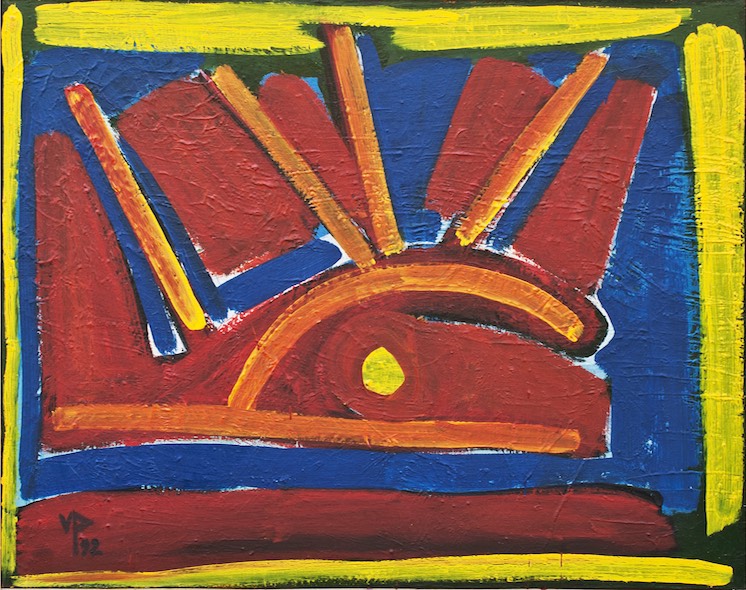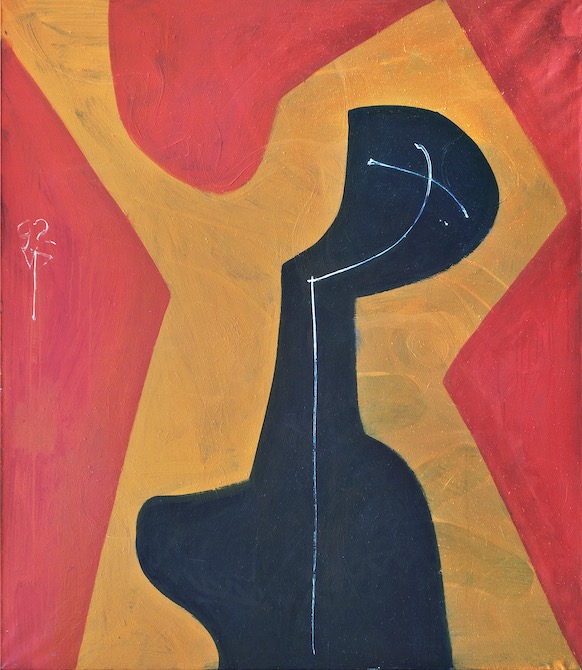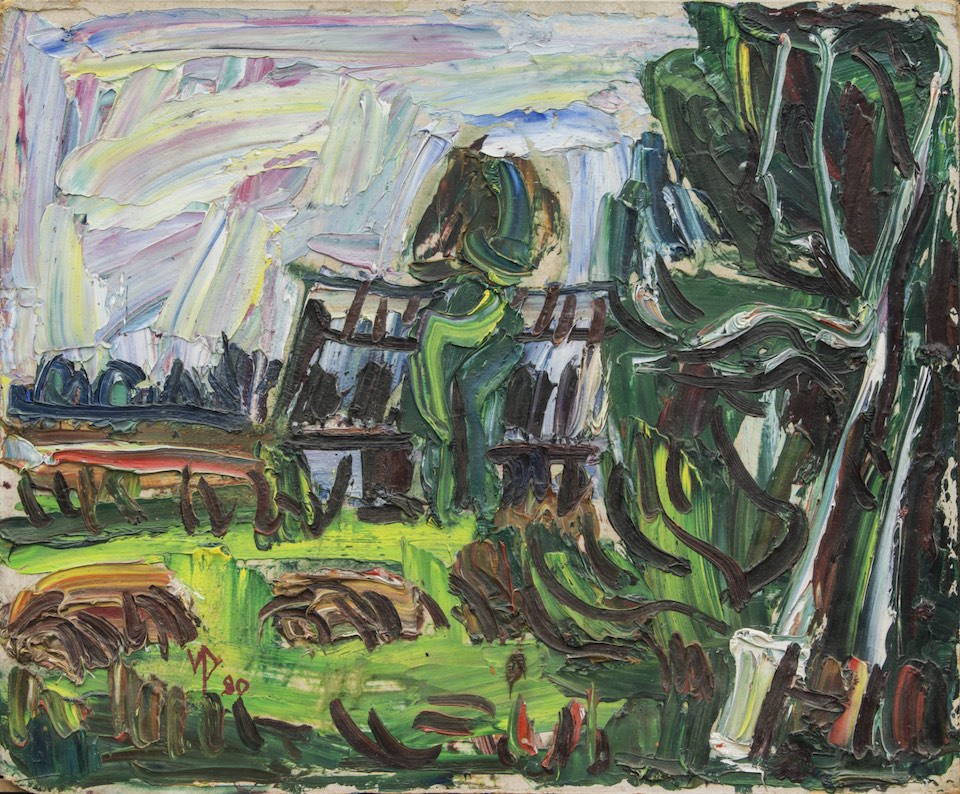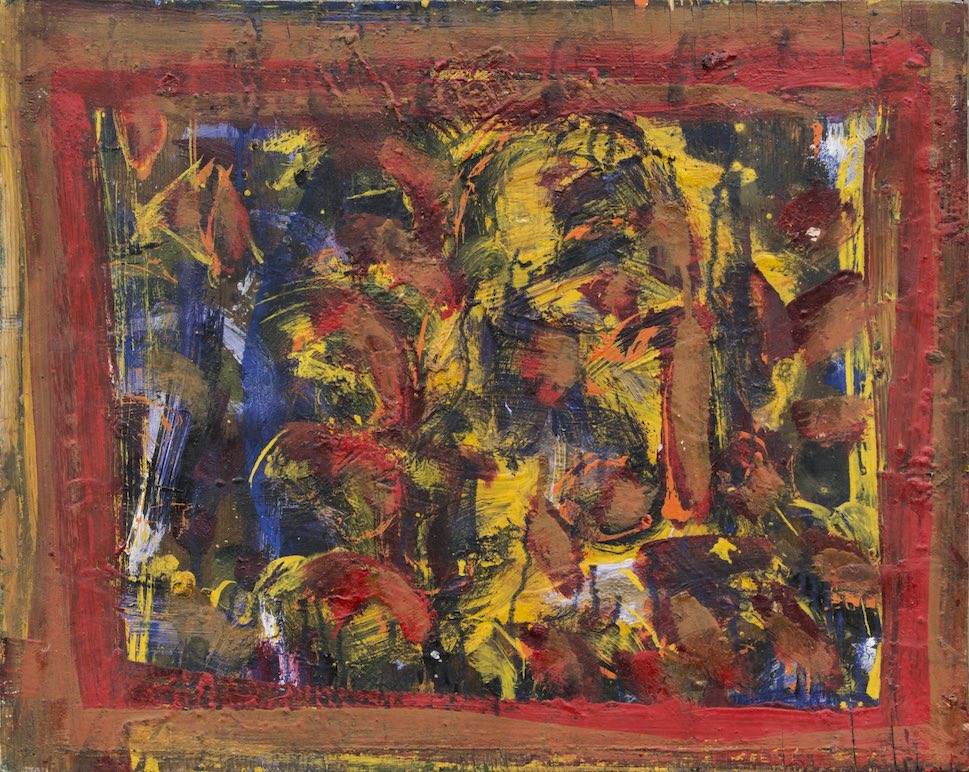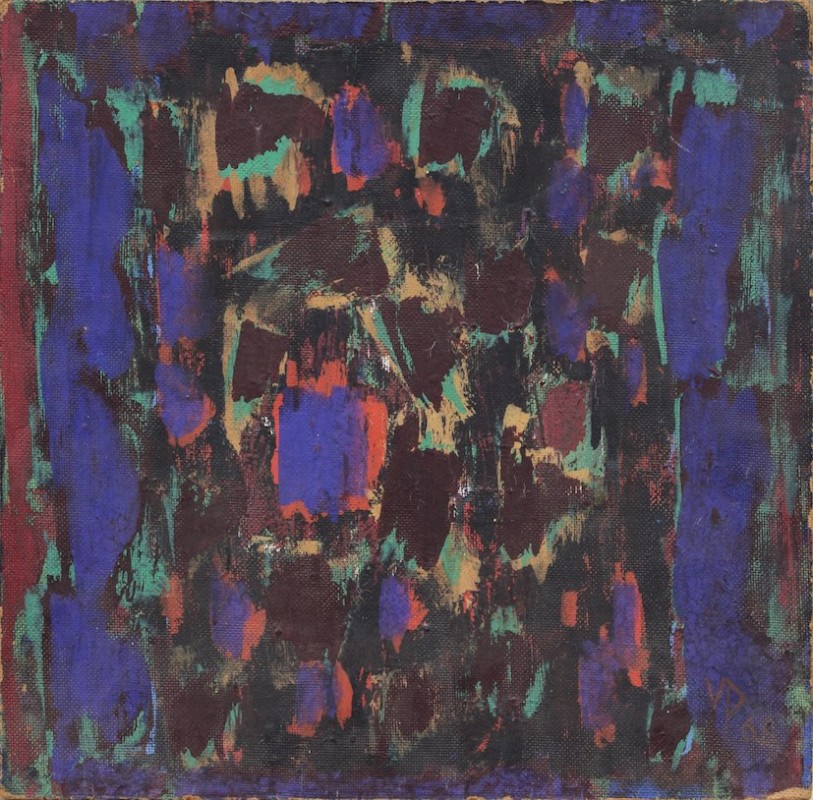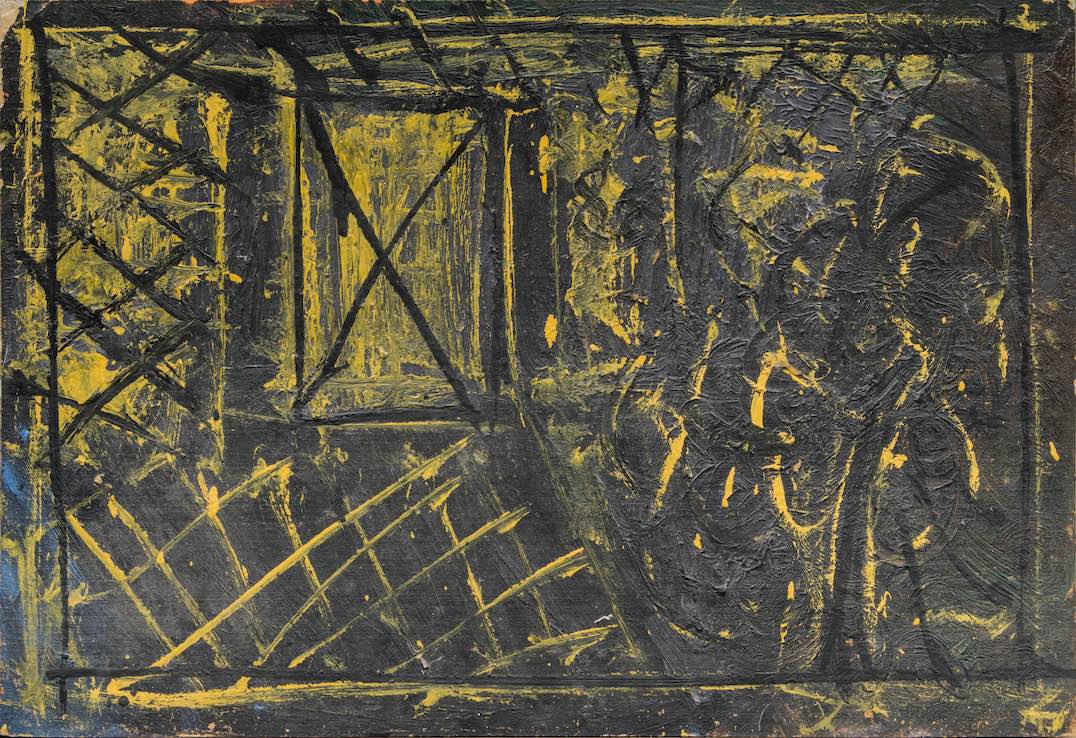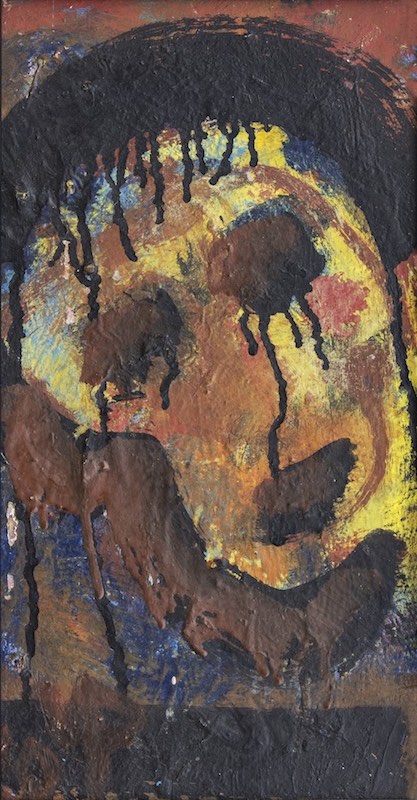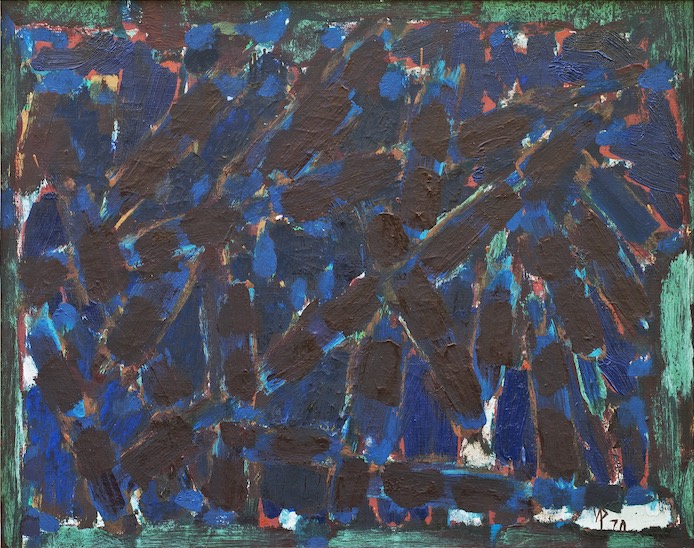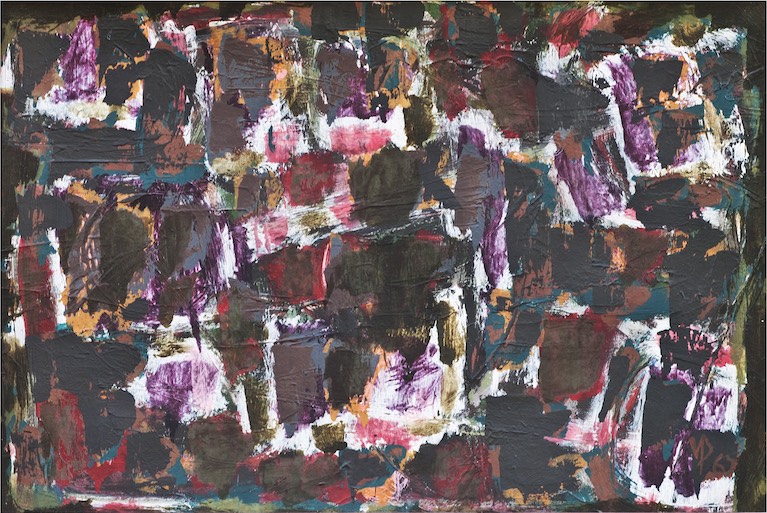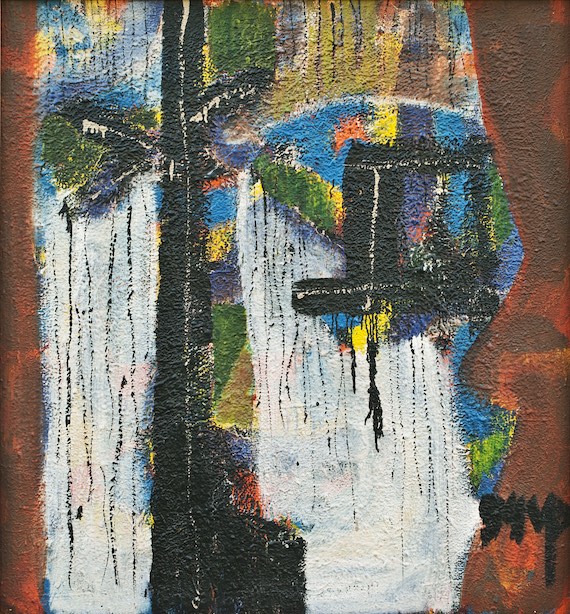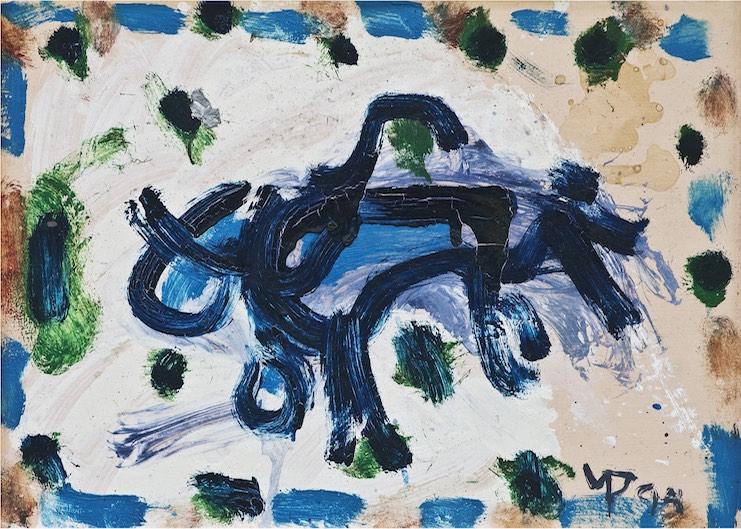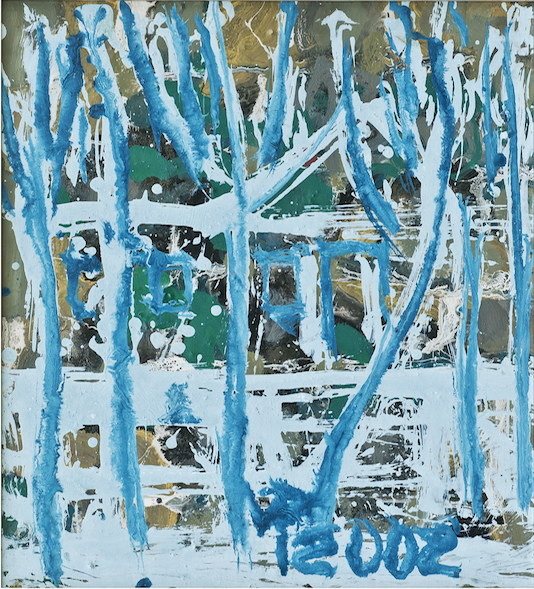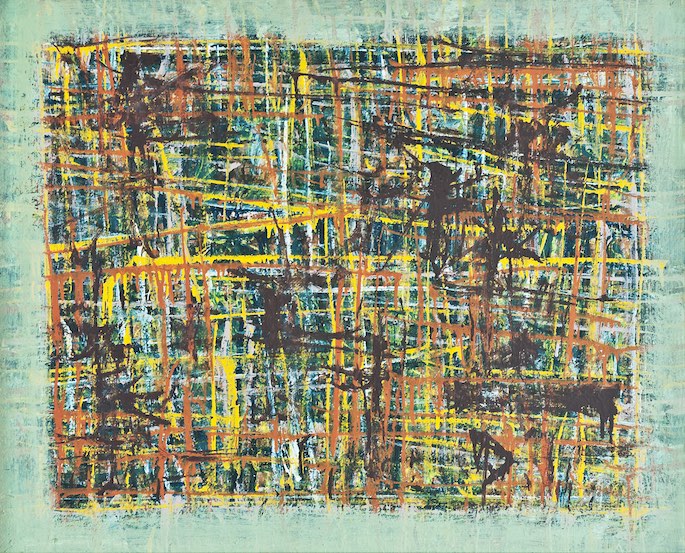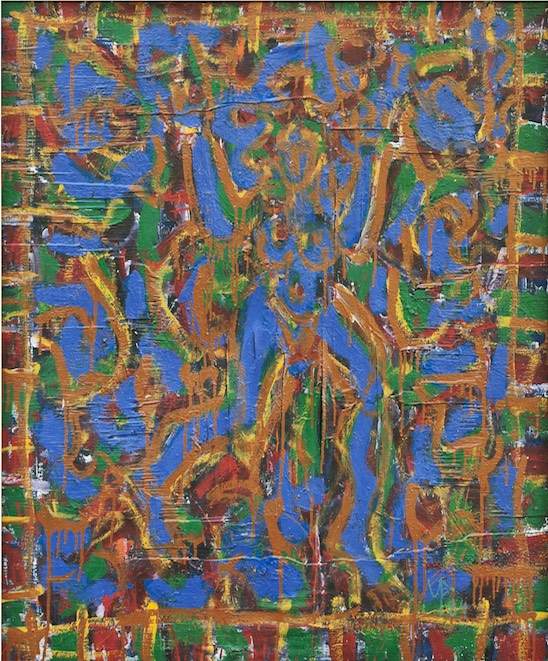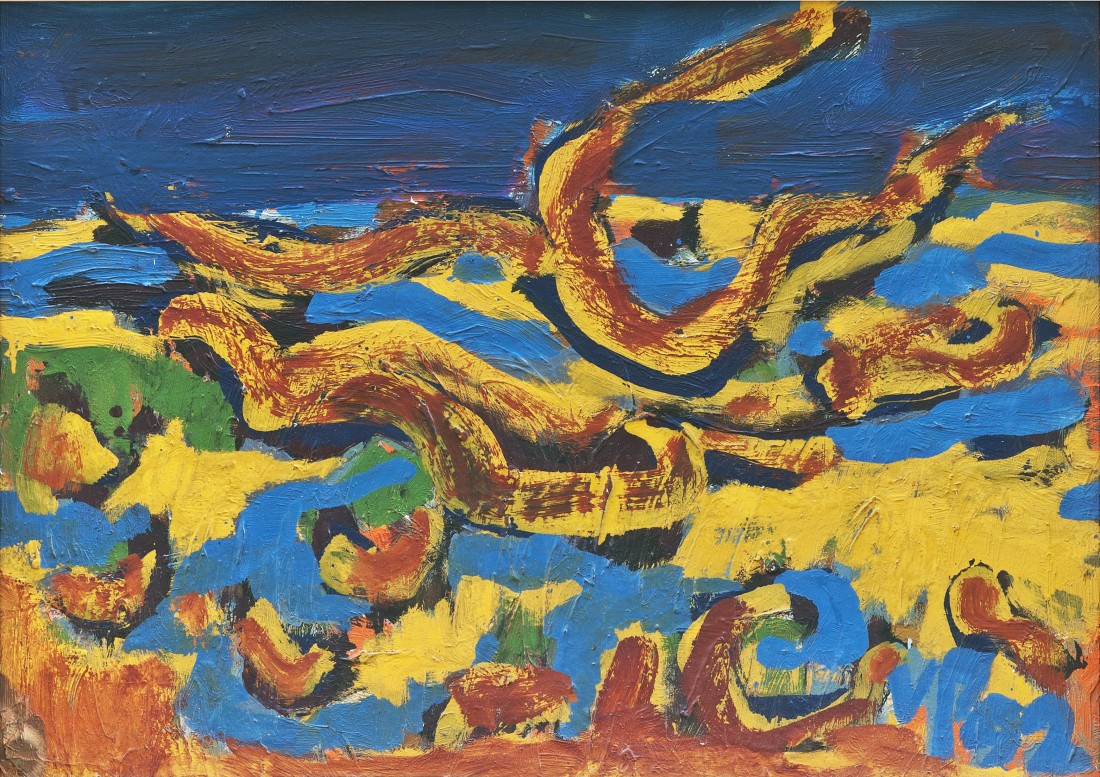Vytautas Povilaitis (1927-2009) and the Aleksotas lookout.
Vytautas Povilaitis – modernist painter, who drew the attention of Kaunas locals with the secrets of his urban landscapes, painted several portraits of the art lovers and provided museums with monumental compositions more than half of a century ago. However, the abstractions by Povilaitis that he started painting back in 1958, when abstract art was prohibited, criticised, censored and only the one official style of social realism was permitted in art, attracted people’s interest the most. How did this happen?
The first abstractions by V. Povilaitis were dark, with motifs of hidden staircases and spiral stairs, reminding of stained-glass panels playing in a dark background like blinking lights. The painter tried various paints and even used printing dye or floor paint for painting, therefore not all of his paintings were of good quality, some have chipped away now, some have not survived. Furthermore, V. Povilaitis liked to paint over his pieces, hence if some piece was not purchased, it would disappear forever. The painter would start abstracting his usual landscapes in the middle stage of the job, foregoing genre painting in favour of abstract compositions. There are stories that he painted his first abstraction at the Palanga painters’ hotel, just for himself, not for an order. And it was not a single occurrence, maybe he was influences to devote himself to abstract composition by the sea as well as the colourfully noisy panorama of the city that he wanted to control at his own discretion.
The painter has told: “Usually I’d paint somewhere higher up, like Oak or Aleksotas hills. I would search for a colour-coordinated motif. Sometime wouldn’t even find it. One time I thought: why don’t I come up with a combination myself? I would only abstract the edges of the painting at first, but became more courageous later. Exhibitions would not accept abstractions, however”.
Vytautas Povilaitis’ proclivity to travel the city on foot and look for an own motif had been noticed by several of his colleagues and friends. Poet Gintaras Patackas remembers the painter grabbing a coffee on Laisvės Ave. in the morning and rushing off to paint. Painter Antanas Martinaitis, who used to right critique pieces on his colleagues, told that Povilaitis finds it hard not to paint, even for a day, “without any regard for the weather, he goes to paint to nature, be it winter or summer”. Another famous painter Povilas Ričardas Vaitiekūnas, who lived and worked in Kaunas at that time, praised Povilaitis on his anniversary, saying that Vytautas’ canvases emerge from the hillsides of Aleksotas, Marvelė and Žaliakalnis. It’s right here, on the hillsides of the city and the banks of the rivers, where the painter’s first true workshop was, “Vytautas would watch the light changing between the rivers of Nemunas and Neris for hours and hours, and would paint his first few hundreds of sketches here”.
Looking at the biography of Vytautas Povilaitis, we can sense why the constant walking was for him. The painter did official work for a few years: he spent several years at the M. K. Čiurlionis art museum, working as a label designer, and a few more as a painting teacher at “Stepžukė” (then – Kaunas S. Žukas Technical School of Applied Fine Arts, nowadays – Kaunas University of Applied Sciences, Faculty of Arts and Education). Therefore, a routine schedule, vacations or the opposition of work and recreation, leisure were non-existent for him. Going somewhere just to do creative work or waiting for free time to paint for him was a superfluous proposition. Although he had a number of homesteads in Lithuania (and one in Latvian seaside) at one time, he enjoyed painting in the city just as much as in his homesteads, the nature, therefore, eventually everybody got used to his intense painting, productivity, and the painter himself could experiment even more due to a constant painting practice.
Vytautas Povilaitis (1927-2009) was born in Jieznas hamlet (Prienai District). Graduated from Kaunas Secondary Arts School in 1944. Studied at the Kaunas Institute of Applied and Decorative Fine Arts in 1944-1950 (did not receive his diploma until 1971 due to political reasons). Took part in fine arts exhibition from 1953. Was a painting teacher at the Kaunas S. Žukas Technical School of Applied Fine Arts (nowadays – Kaunas University of Applied Sciences, Faculty of Arts and Education). Did only creative work starting from 1974. His last painting is dated to 2004.
Although Vytautas did not receive any national awards in his life (except for formal certificates of merit on his anniversaries for “long time creative work”), he was perhaps the most popular and appreciated painter with the Kaunas’ public.
The works of Vytautas Povilaitis have been acquired by the Lithuanian National Museum, M. K. Čiurlionis National Museum of Art, Kaunas Modern Art Foundation, MO museum, other private collectors in Lithuania and abroad.
Back to the map

